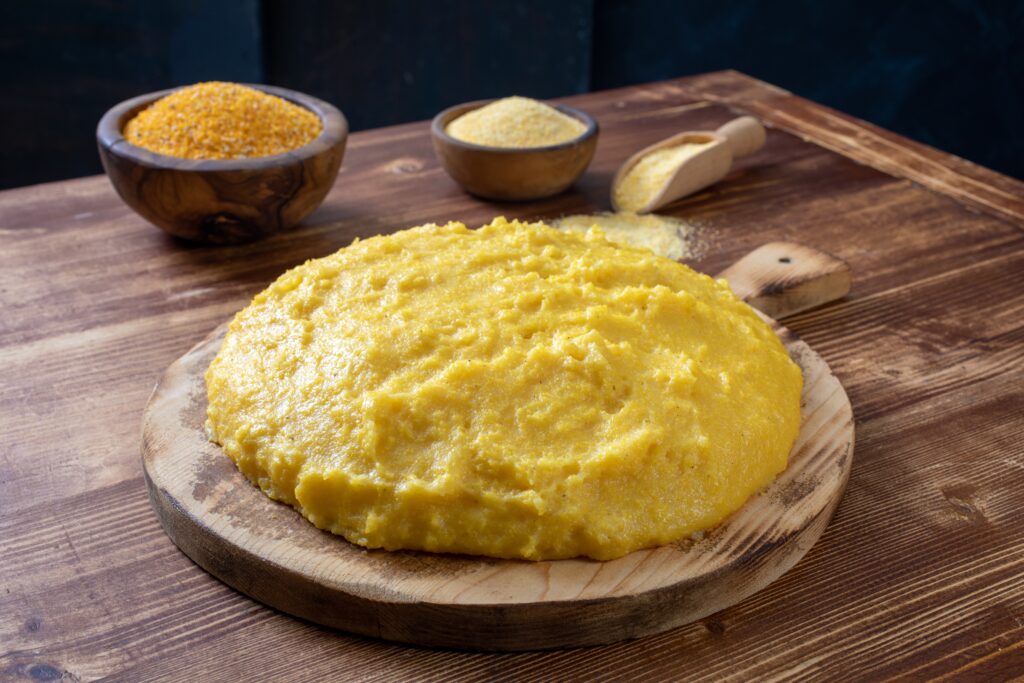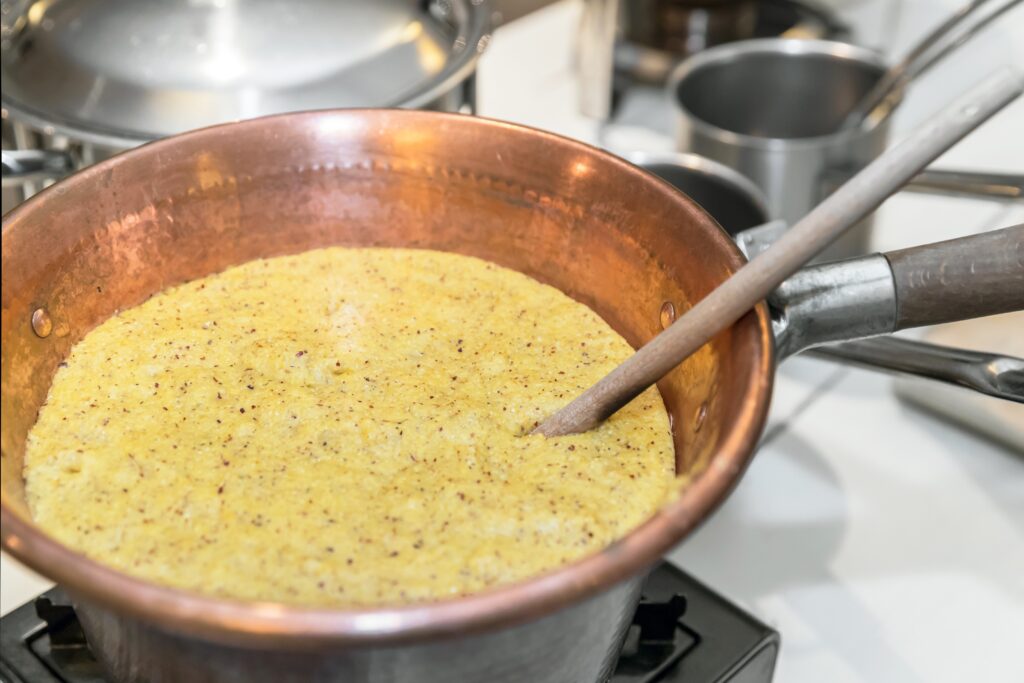Polenta is a popular Italian dish commonly found in the northern regions of Italy. In the past, this dish served as a staple during times of hardship. However, it has now transformed into a prominent delicacy for those seeking mountain retreats.

This humble food is made from water, corn flour, olive oil, and salt. It shows us how people were able to endure and survive during difficult times when there was a shortage of food.
There are various types of polenta: the white one made with white corn flour, the yellow one made with yellow and coarser corn flour, the “taragna” one which is made with corn flour and buckwheat.
Culinary traditions vary depending on the geographical area.
Simple ingredients and simple process: the only thing to watch out for is the formation of lumps! But don't worry, we'll reveal some tricks to you.
Bring the water to the boil in a pan and then add the salt and olive oil. Don't omit the addition of olive oil: it is the secret ingredient that will help the polenta cook evenly without forming the annoying lumps we told you about.
Now it's time to add the corn flour a little at a time, mixing by hand with a whisk. Be careful to stir continuously, it is essential for making the perfect polenta!
Once the mixture reaches a boiling point, it is crucial to reduce the heat and diligently stir with a wooden ladle. Make sure to mix thoroughly, paying close attention to the bottom. This process requires patience as you continue to stir for a minimum of 40 minutes.
Once the necessary time has passed, it's time to serve the polenta in a serving dish or on a cutting board. The consistency at this point must be dense, without lumps and compact.
For 4 people, approximately you'll need 500 grams (17.6 oz) of corn flour, 2 liters of water, 15 grams (0.5 oz) of olive oil and a spoonful of salt. We say “approximately” because polenta must also be made using a bit of intuition: some flours absorb more water than others; it is necessary to check and adjust as needed.
What do you eat with? Polenta can be accompanied by anything!
With stew, if you are omnivorous, with pieces of cheese and tossed in the oven to make them melt, if you are vegetarian, with tomato sauce if you are vegan! In short, polenta is good for everyone and can even be eaten without anything else, as simple as that.
If you prepare it, share your result with us by sharing it on Instagram or Facebook and tagging @italymadeeasy!


